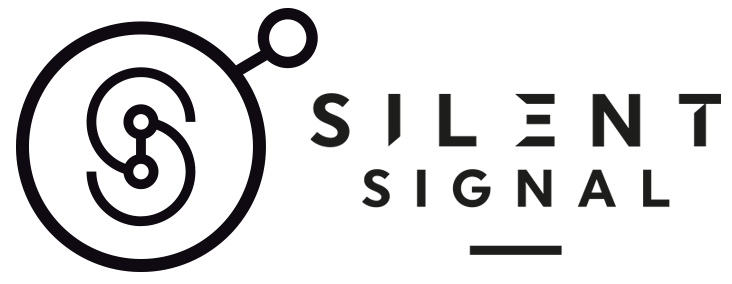by Heather Barnett, January 2016.
“Whilst the films are in many ways informative, drawing the viewer into previously unknown realms, they exist far from the didacticism of science information films.”
Through a process of observation and experimentation, dialogue and exchange, six partnerships between animation artists and molecular scientists have produced a series of animation artworks on the subject of cell signalling and bodily dialogues. Embedded in both laboratory and studio, the artists have engaged with a range of biomedical research areas, including malarial transmission, DNA sequencing and the mechanisms at play within circadian sleep cycles. Form and function have been scrutinised at varying scales, exploring stages of inflammation, cell division and immune responses within the body.
The ambition of the films was to get under the skin of contemporary scientific research through creative animation practice, to draw out processes and practices, narratives and debates, and to engage public audiences along the way. Whilst they range greatly in approach and intention, all six films produced demonstrate a serious undertaking by the artists to engage meaningfully with the fields of research. It is evident in the works themselves, and in the interviews conducted with the collaborating partners, that the processes of inquiry worked in both directions, the scientists gaining as much insight into their own research areas through the lens of the artists’ observations, questions and interpretations, as the artists learnt through the probing the methods and motivations of scientific specialisms.
Within the films, the complex internal conversations within our bodies are elucidated through a combination of hand drawn illustration, generative graphics and computer imagery, shifting between the filmic conventions of illustration, abstraction and visualisation. Zooming from the macro scale of individual human experience to the micro view of cellular patterns of behaviour, the animations tell us stories… about how infection is transmitted, about what it’s like to experience sleep deprivation, about cellular functions, about the stages of inflammation, and about the ethical implications of genetic research. The films delight and enlighten. They elucidate and speculate…
For example, AfterGlow (boredomresearch) takes key principles employed in modelling the transmission of malarial infection and reworks them within an imagined landscape. The viewer is invited to fly through an environment populated with infective light forms as they signal unknown communications across an otherwise invisible network. The core components of scientific language (data and algorithm) are processed through a filter of visual poetry, the results reaching far beyond mere data visualisation. Whilst no direct scientific conclusions can be drawn from this population of twinkling forms, the transmission process and its inherent complexity is rendered clearly visible.
Rather than scripting their film in a traditional sense, Genetic Moo devised a series of public participatory events inviting people to engage with the processes of inflammation through interactive play. The ‘Blister Cinema’ events used coded visuals and sound track prompts to elicit an intuitive feedback loop between ‘performer’ and projected imagery. The final film, Battle of Blister, collates fragmented human forms embodying and enacting the various stages of inflammation, a molecular voice asserting “I am the plasma, oozing, flowing, seeping… from the blood vessels to the danger zone. I am the blister. Swim in me.”
More speculative consideration comes in the form of The Signal and the Noise (Charlie Tweed), which takes us on a journey to a future virtual world of molecular machines. Issues of genetic choice and control are voiced through hybrid machines, whose “codes of preference [and] codes of fear” are in charge of decision-making. What appears as science fiction is really science fact (in the making), as the biotechnologies in question are in nascent ascendance within real world research – accompanied by real world ethical implications.
In Eric Schockmel’s film, Immunecraft, you are invited to ‘adopt your own living cell culture’ in a cryptogenetic computer game. Presented as a promotional trailer, the film appropriates the conventions of gaming language with quiet humour – at the outset the viewer is warned of “microscopic violence” and “lymphatic mischief”. Questions of responsibility towards cellular life forms are raised throughout, but never through a hectoring tone.
Documentary traditions are employed to great effect in both Loop (Samantha Moore) and Sleepless (Ellie Land). The first voices a team of research scientists as they explain their work and discuss what is known (and unknown) about septin cage assembly and “how these jelly beans come together”. The second reveals the repercussions of sleep deprivation on mental health and well-being, voiced by a group of patients. Accompanied by collaged visuals and hand drawn animation, both films reveal great honesty in the treatment of their subjects. Avoiding over-illustration of the core scientific principles, the films focus on the processes of research and personal experience – science as a very human subject – possessing mutability, subjectivity and interpretation.
Early on in the making of Loop, collaborating scientist, Dr Serge Mostowy, commented that, “for our science to be represented by art helps us to visualise the processes we are studying, and enables common perception to emerge.” The process of interpretation through Silent Signal has formed an iterative dialogue between the artists and scientists, as information is transmitted and translated, as visual forms emerge and evolve, and shared understandings become manifest.
Whilst the films produced are in many ways informative, drawing the viewer into new and previously unknown realms, they exist far from the didacticism of science information films. The biomedical subjects at the heart of the films are not made explicit through the animations, their intention was always more subtle than that. Through the diverse visual languages and narrative devices employed we instead engage with the implicit realities and imagined futures of scientific research.
Heather Barnett is an artist, researcher and educator with a long-standing career working at the intersections of art and science, often working in collaboration with scientists, artists, participants and organisms. Employing imaging technologies and biological systems, her artwork has involved microbial portraiture, performing cuttlefish, and an ongoing ‘collaboration’ with an intelligent slime mould.
Heather has been Artist in Residence in diverse organisations including L’Autre Pied Restaurant, Infoterra Mapping Company, Poole Hospital Pathology Dept, and Sussex University School of Life Sciences. Commissions include the Postgraduate Medical Institute at Anglia Ruskin University (2012), Guy’s Hospital Cancer Day Unit (2011) and The Other Flower Show, V&A (2003).
She is Course Lecturer on the MA Art and Science at Central Saint Martins (University of the Arts London), is a Higher Education Academy National Teaching Fellow and chairs London LASER art and science talks. @HeatherABarnett

